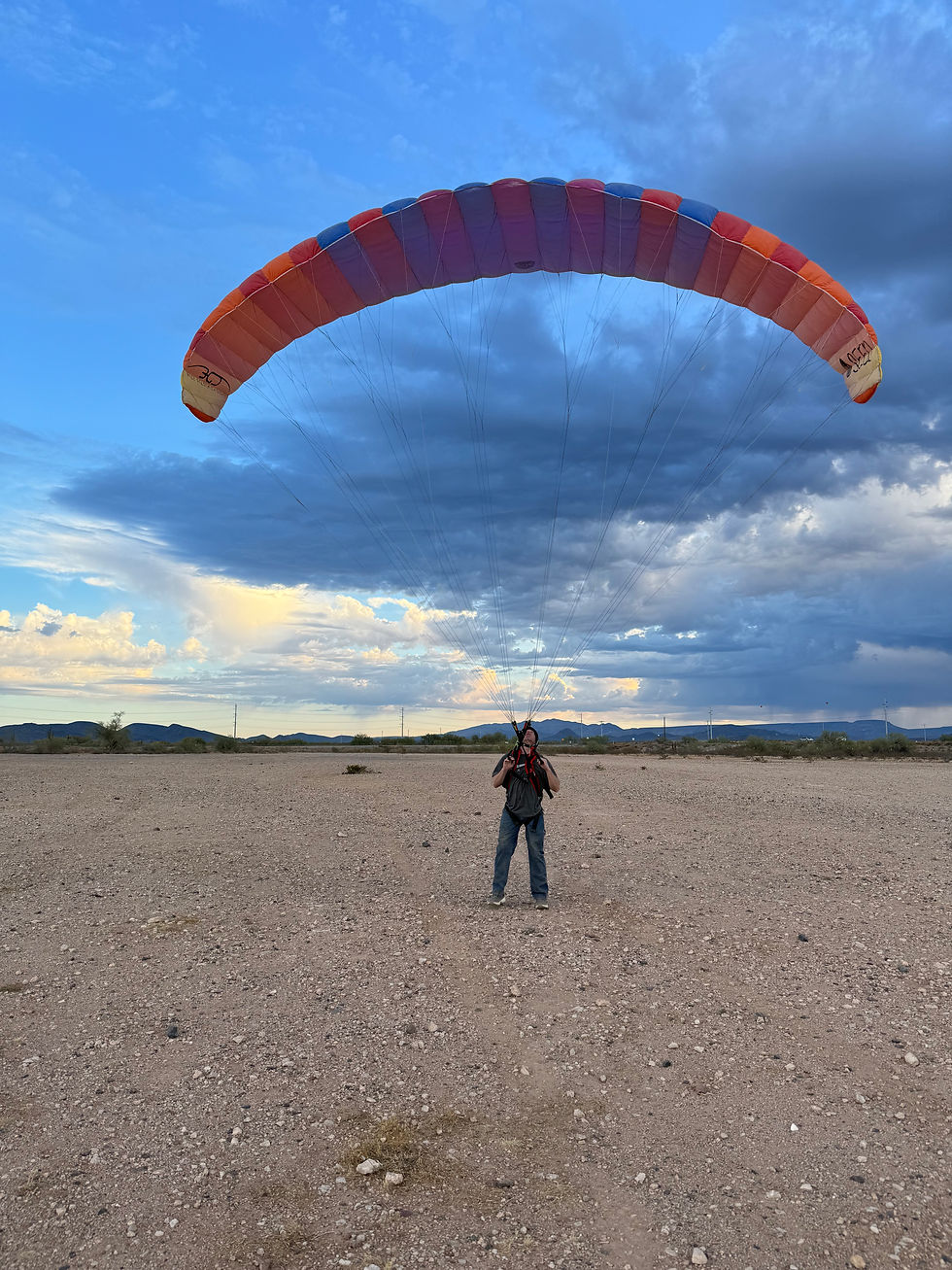Mastering the Fundamentals of Paramotor Training
- Don Youngker
- Aug 1
- 3 min read
Paramotoring is an exhilarating way to experience flight with minimal equipment and maximum freedom. It combines the simplicity of a paraglider wing with a motorized propeller worn on the back, allowing pilots to take off from flat ground and soar through the skies. Whether you are a complete beginner or looking to refine your skills, mastering the fundamentals of paramotor flying is essential for safety and enjoyment.

Intro to Paramotor Flying: Understanding the Basics
Before you take to the skies, it’s important to understand the core components and principles of paramotor flying. The paramotor consists of three main parts: the wing (paraglider), the motor unit, and the harness. The wing provides lift, the motor provides thrust, and the harness connects the pilot to the equipment.
Learning how these parts work together is crucial. For example, the wing inflates and creates lift when air flows over it, while the motor pushes you forward. Controlling the wing involves manipulating brake toggles to steer and adjust speed. Ground handling skills, such as inflating the wing and managing the lines, are the first steps in training.
Key points to focus on:
Familiarize yourself with the equipment and its maintenance.
Practice ground handling to control the wing on the ground.
Understand weather conditions and how they affect flight.
Starting with these basics builds a strong foundation for safe and confident flying.
Essential Skills for Safe Paramotor Flying
Safety is paramount in paramotoring. Developing essential skills early on can prevent accidents and enhance your flying experience. One of the most important skills is mastering takeoff and landing techniques. Takeoff requires a smooth inflation of the wing and a steady run to gain lift. Landing involves controlling descent speed and flare timing to touch down gently.
Another critical skill is managing emergency situations. This includes knowing how to handle engine failure, wing collapses, or sudden weather changes. Practicing these scenarios under instructor supervision prepares you for real-life challenges.
Practical tips for skill development:
Takeoff practice: Start in calm wind conditions and focus on smooth wing inflation.
Landing drills: Practice flaring and touchdown in open fields.
Emergency procedures: Simulate engine cut-offs and wing collapses safely.
Regular practice and patience are key to mastering these skills.

Equipment Selection and Maintenance
Choosing the right equipment is a vital part of your paramotor journey. Beginners should select a paramotor with a reliable engine, comfortable harness, and a wing suited to their weight and skill level. Lightweight and easy-to-handle gear can make learning easier and safer.
Maintenance is equally important. Regularly inspect your motor, propeller, and wing for wear and tear. Clean the equipment after flights, especially if you’ve been near saltwater or dusty areas. Proper storage protects your gear from damage and extends its lifespan.
Maintenance checklist:
Check fuel lines and engine oil levels.
Inspect wing fabric and lines for tears or frays.
Tighten bolts and screws on the motor frame.
Store equipment in a dry, cool place.
Investing time in equipment care ensures reliability and safety during every flight.
The Role of Professional Instruction in Paramotor Training
While self-study and practice are valuable, professional instruction is indispensable for mastering paramotor flying. Certified instructors provide structured lessons, personalized feedback, and safety guidance that accelerate learning.
Enrolling in a comprehensive paramotor training program offers several benefits:
Access to expert knowledge and experience.
Hands-on practice with supervision.
Learning in a controlled and safe environment.
Building confidence through gradual skill progression.
Professional training also covers important topics like airspace regulations, weather interpretation, and flight planning. These lessons prepare you not just to fly, but to fly responsibly.

Developing Confidence and Enjoying the Flight Experience
Confidence grows with experience and knowledge. As you master the fundamentals, you’ll find flying becomes more intuitive and enjoyable. Setting realistic goals and celebrating small milestones keeps motivation high.
Try to fly regularly in different conditions to build adaptability. Join local paramotor clubs or online communities to share tips and stories. Remember, every pilot started as a beginner, and continuous learning is part of the journey.
Tips for building confidence:
Fly with a buddy or instructor when possible.
Review your flights and identify areas for improvement.
Stay updated on new techniques and safety practices.
Enjoy the unique perspective and freedom paramotoring offers.
With dedication and the right approach, paramotor flying can become a lifelong passion.
Mastering the fundamentals of paramotor flying opens the door to an incredible aerial adventure. By understanding your equipment, honing essential skills, maintaining your gear, and seeking professional guidance, you set yourself up for safe and thrilling flights. Embrace the learning process and enjoy the freedom of the skies.






Comments